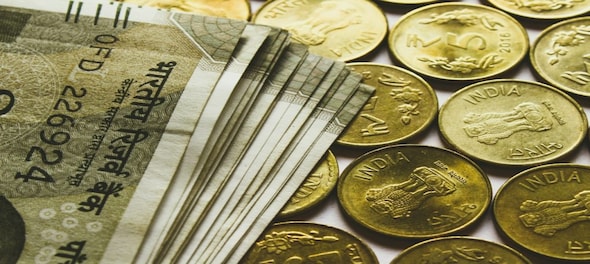
The rupee ended the financial year with a fall of 1.5% against the US dollar as compared to a close to an 8% decline in FY23. The local currency fared even better compared to other emerging market currencies, despite headwinds like surging oil prices and a strengthening dollar. The currency ended the last day of the year at 83.40.
While the crude prices rallied as much as 19% from its December lows, the dollar index gained 3.5% to 105 during the same period. India has been vulnerable to high global oil prices as the country imports 87% of its oil demand. A high oil prices would widen India’s current account deficit (CAD) and thereby putting pressure on the currency.
However, cheaper oil imports from Russia, buoyant services exports and resilient remittance inflow have cushioned volatility in oil prices. In FY24, India imported over 35% share of its crude oil imports from Russia. The share of Russian crude oil in India’s total volume of imports was a mere 2% in FY22 and 20% in FY23. Additionally, foreign flows of $40 billion to equity and debt markets also supported the currency.
Economists at UBS believe India can sustain global crude oil prices up to $90/bbl, all else remaining unchanged, but the lower the oil goes, the better it would be for the country. The Brent is currently hovering at $87.2/bbl. UBS, which revised its rupee target for the next year said, "Reflecting the current account balance forecast revisions, we shift our USDINR end-FY25 forecast from 84 to 82."
Among the emerging market, rupee has outperformed most of its peers barring Mexican Peso and Brazilian Real. Notably, the Mexican Peso had the most favourable outlook among emerging-market currencies, according to an HSBC survey of 121 investors from institutions overseeing $362 billion of EM assets. The rally in the peso has been driven by a combination of high-interest rates, low volatility and ample liquidity. While the peso surged 9% in FY24, Brazilian Real gained 1.6%.

Further, the inclusion of Indian Government Bonds in global bond indices is perceived to be a big tailwind for the currency. In September 2023, JP Morgan announced its decision to include India’s bond in its Global EM local Currency Government Bonds Index as of June 2024. Similarly, in March this year, Bloomberg also announced its decision to include India's Fully Accessible Route (FAR) bonds in the Bloomberg Emerging Market (EM) Local Currency Government Index and related indices, phased in over 10 months, starting at the end of January 2025.
Market participants expect these indices' inclusion will attract inflows to the tune of $25-30 billion over the next year.
Check out our in-depth Market Coverage, Business News & get real-time Stock Market Updates on CNBC-TV18. Also, Watch our channels CNBC-TV18, CNBC Awaaz and CNBC Bajar Live on-the-go!


BJP's Hindi heartland dominance faces test in phase 3 polls
May 2, 2024 9:14 PM
Lok Sabha Election: Re-elections at a Ajmer booth after presiding officer misplaces register of voters
May 2, 2024 4:54 PM

